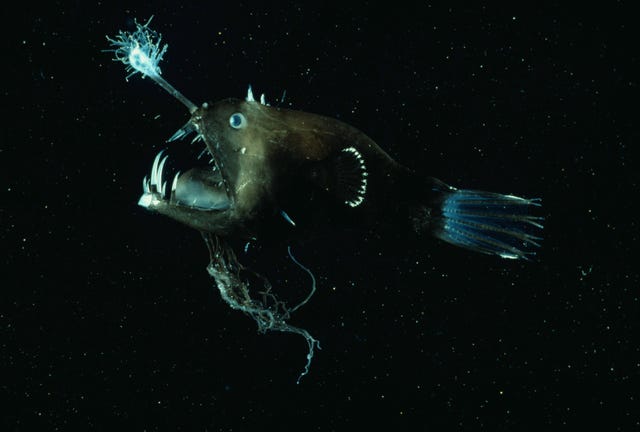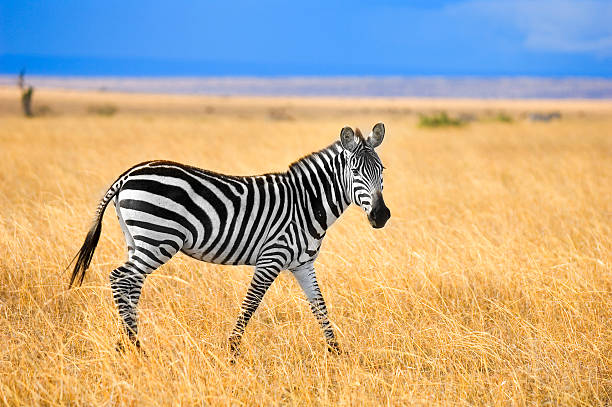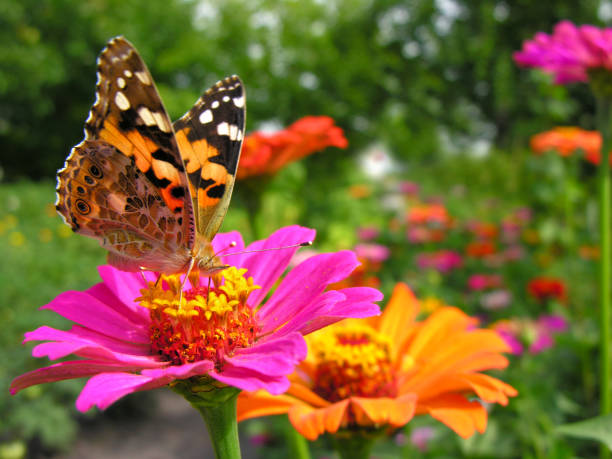Memory is not just a human trait—it is the invisible thread that connects experience to survival across the animal kingdom. To remember is to learn, to adapt, and to thrive. In the wild, memory is everything: it guides migration paths, helps animals find food and water, and even allows them to recognize friends—or enemies—after years apart.
While humans have long celebrated their own cognitive power, nature’s memory masters often leave us humbled. Some animals can recall faces after decades, others navigate thousands of miles using mental maps, and a few can even store emotional memories that mirror our own.
Let us journey through the minds of ten remarkable creatures whose memories prove that intelligence takes many forms—and that remembering is one of evolution’s most profound gifts.
1. Elephants – The Giants of Remembrance
If there is a single animal synonymous with memory, it is the elephant. “An elephant never forgets” is more than a saying—it’s a scientific truth.
Elephants have enormous brains, weighing up to five kilograms, with a highly developed hippocampus—the region responsible for memory and emotion. This neural power allows them to recall vast landscapes, water sources, and the faces of other elephants and humans for decades.
In the drought-stricken savannas of Africa, matriarchs—elder female leaders—use their memory to guide herds to long-forgotten watering holes. These decisions mean life or death for hundreds of elephants. Studies show that older matriarchs lead more successful herds precisely because of their superior memory and wisdom.
Their emotional memory is just as extraordinary. Elephants recognize individuals even after years of separation. They mourn their dead, visiting the bones of lost kin and touching them gently with their trunks. This deep, emotional intelligence shows a memory that goes beyond instinct—a memory that feels.
Their memories bind generations, teaching young elephants routes, dangers, and social knowledge. In their minds, the map of survival is written not on paper but in experience.
2. Dolphins – The Ocean’s Remembering Minds
In the shimmering blue of the oceans, dolphins reign not only as masters of play and communication but as champions of memory. These aquatic geniuses possess the longest social memory ever recorded in the animal kingdom—remembering the distinct whistles of other dolphins after more than twenty years.
Each dolphin has a unique “signature whistle,” functioning like a name. Even after decades apart, dolphins can recognize the call of an old companion and respond instantly. This astonishing recall was proven in controlled studies where dolphins reacted only to the calls of individuals they once knew, ignoring strangers completely.
Beyond names, dolphins remember complex social hierarchies and past interactions, crucial for navigating their fluid societies. Their memory allows them to build alliances, recognize friends, and avoid rivals in pods that can span hundreds of individuals.
Their intelligence, driven by powerful long-term memory, paints a portrait of creatures whose minds are as deep and fluid as the oceans they call home.
3. Ravens – The Intellectuals of the Sky
Ravens are among the most intelligent and cunning birds on Earth, and their memories are at the core of their brilliance. These black-feathered philosophers can remember human faces, plan for the future, and even recall social hierarchies within their flocks.
In experiments, ravens have shown they can remember which humans treated them kindly—and which ones did not—for years. If a person once threatened a raven, that bird would scold or avoid them long after the encounter. What’s more, they communicate this knowledge to others, warning them about the “dangerous” individual.
Ravens also remember where they’ve hidden food caches, even months later. They use landmarks and mental maps to locate their stashes, demonstrating spatial memory rivaling that of mammals.
But perhaps most fascinating is their emotional memory. Ravens form deep social bonds and seem capable of recalling emotional experiences—like betrayal or generosity—affecting how they interact with others later. Their memories are not just of objects or places but of meaning, making them thinkers in feathers.
4. Chimpanzees – The Minds That Mirror Our Own
Chimpanzees, our closest living relatives, share with us not just 98% of our DNA but a powerful capacity for memory. Their minds can hold onto visual, social, and emotional information with astonishing precision.
In a famous experiment at Kyoto University, a chimpanzee named Ayumu demonstrated photographic memory that stunned researchers. He could recall sequences of numbers displayed on a screen faster and more accurately than most humans, even when shown for only fractions of a second.
Beyond laboratory brilliance, wild chimps rely on memory for survival. They remember which trees bear fruit during which seasons and can navigate vast forest territories without losing track of their food sources. They also recall complex social relationships—who helped them, who deceived them, and who can be trusted.
Emotional memory in chimpanzees runs deep. Mothers grieve for years after losing a child, and individuals recognize old friends after long separations. Their memories reveal a mind that feels, plans, and reflects—echoes of the same cognitive spark that burns within us.
5. Clark’s Nutcracker – The Bird with a Thousand Hiding Places
In the high mountain ranges of North America lives a small, gray bird that possesses one of nature’s most astonishing memories. The Clark’s Nutcracker caches tens of thousands of pine seeds each summer—sometimes over 30,000—and remembers the location of each one months later, even under deep snow.
Scientists have marveled at how this bird recalls thousands of sites scattered across miles of terrain. It uses spatial memory, relying on visual landmarks like trees, rocks, and even the shape of mountains. Even after snow or rain has transformed the landscape, the nutcracker can locate its hidden treasures with near-perfect accuracy.
This extraordinary ability allows it to survive long winters when food is scarce. But it’s not just instinct—it’s learned intelligence. Young nutcrackers watch adults and refine their spatial memory over time.
Their minds are living maps, each memory a mark on an invisible grid of survival. If memory is a kind of magic, then the Clark’s Nutcracker is nature’s quiet magician.
6. Octopuses – The Masters of Mystery and Memory
Beneath the waves, in the alien world of coral reefs and ocean caves, octopuses rule as the masterminds of the sea. With brains unlike any other—spread through their arms as much as their head—they possess incredible short- and long-term memory.
Scientists have discovered that octopuses can recognize individual humans and remember them for months. In captivity, they distinguish between handlers who feed them and those who merely clean tanks, often reacting with affection—or mischief—accordingly.
Their memory also aids in problem-solving. Octopuses can navigate mazes, open jars, and learn from observation. They remember solutions for future use, adapting when conditions change.
This combination of flexibility and recall shows intelligence driven by emotion and experience. Their memories are not stored in words or images but in the flow of behavior—a living memory that guides every movement of their curious, questing arms.
The octopus reminds us that intelligence wears many faces, and memory may be the truest measure of consciousness in any form.
7. Horses – The Empathetic Rememberers
The horse, one of humanity’s oldest companions, has a memory that extends beyond the physical world into the emotional. Horses remember faces, voices, and even the emotions of the people they encounter—sometimes years later.
Studies have shown that horses recognize human expressions and adjust their behavior accordingly. If someone once approached them with anger or fear, they remember the person’s face and respond differently the next time. They also remember routes, stable arrangements, and the voices of other horses.
Their emotional memory is profound. Horses form strong bonds with both humans and herd members, recognizing individuals after long separations. They remember positive and negative experiences vividly, which is why patience and kindness are essential in their training.
When a horse neighs softly at the sight of an old companion, it is not instinct—it is memory rekindled. Their minds hold the warmth of the past as clearly as they see the road ahead.
8. Sea Lions – The Aquatic Scholars
Sea lions may appear playful and carefree, but beneath their sleek exteriors lies a sharp memory rivaling that of dolphins. These social marine mammals remember visual cues, commands, and even abstract concepts for years.
In laboratory studies, California sea lions demonstrated the ability to remember training tasks a decade after first learning them—an extraordinary display of long-term recall. They can recognize symbols, follow sequences, and even learn “rules” that they apply to new situations, suggesting a high level of cognitive flexibility.
In the wild, memory plays a vital role in navigation and social structure. Sea lions recognize the calls of their pups among thousands of others on crowded beaches. Mothers use distinct vocal signatures, and pups memorize them within days of birth.
Their memories bridge generations, ensuring that the harmony of their rookeries endures across years and tides.
9. Squirrels – The Forest’s Hidden Bankers
If you’ve ever watched a squirrel dart through autumn leaves, burying acorns in dozens of places, you might wonder how it ever finds them again. The answer lies in one of nature’s most remarkable spatial memories.
Squirrels bury hundreds, sometimes thousands, of nuts each season, and they remember the location of most of them months later—even when snow blankets the forest. They use spatial memory aided by scent and landmarks, and studies suggest they remember not just where the nuts are, but what kind they buried, prioritizing the most perishable first.
Their brains even adapt physically during this period. In autumn, the hippocampus—the brain region tied to memory—temporarily grows larger, improving their recall. When winter ends, it shrinks again.
These clever foragers transform memory into a survival strategy, proving that intelligence is not just in problem-solving but in preparation. Every nut hidden beneath the soil is a promise kept between present and future.
10. Dogs – The Loyal Rememberers
Dogs are often celebrated for their loyalty, but behind that loyalty lies a profound memory. Though their short-term memory may be brief, their long-term and associative memories are powerful and deeply emotional.
A dog remembers faces, voices, and smells long after separation. Studies have shown that dogs can recognize their owners after years apart and react with unmistakable joy. Their sense of smell, thousands of times more sensitive than ours, ties memory to emotion—they can recall specific scents from their past with incredible accuracy.
Dogs also remember commands, routines, and locations. More importantly, they remember feelings. A dog never forgets kindness—or cruelty. Their memories are woven from emotion and attachment, forming the unbreakable bonds that have made them humanity’s most trusted companions.
In every wag of a tail or tilt of the head lies remembrance: of play, of comfort, of love. Their memories, though wordless, speak in the purest language of all—devotion.
The Science of Animal Memory
Memory in animals is a marvel of adaptation. It takes many forms: spatial memory in birds and rodents, social memory in primates and cetaceans, emotional memory in mammals that form bonds. Each species remembers what it must to survive.
At its core, memory depends on the hippocampus and other brain structures that store and retrieve information. But science now understands that emotion strengthens memory. The more significant an experience—whether joyful or fearful—the longer it lasts. This truth binds all sentient creatures: we remember what moves us.
From the elephant’s mourning to the dolphin’s reunion, memory is both tool and testimony. It proves that intelligence and feeling are not unique to humans but are threads woven through the vast fabric of life.
The Heart of Remembrance
In the end, memory is the story every creature carries within. It is how a bird finds its way home, how a mother elephant leads her herd, how a dog recognizes the voice of the one it loves.
These animals show us that remembering is not just about intellect—it’s about emotion, connection, and identity. Memory gives continuity to life, turning fleeting moments into meaning.
When we look into the eyes of an elephant or hear the song of a whale, we are witnessing not just awareness, but history—echoes of everything they have seen, learned, and loved.
The wild remembers. And in its memory lies the wisdom of survival, the poetry of connection, and the profound truth that all minds—great and small—are bound by the same timeless gift: to remember.






